Exploring the Greater Bay Area, Southern China's megaregion
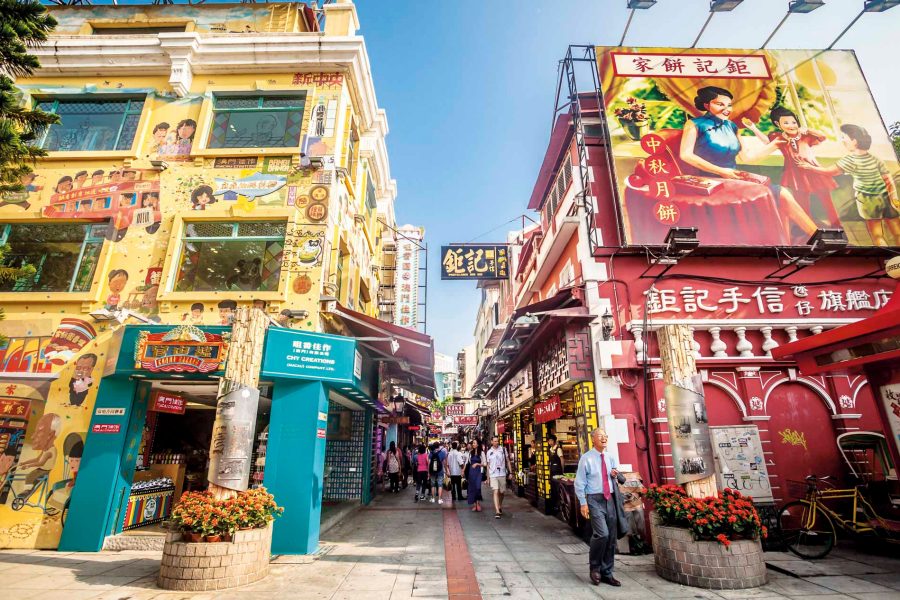
Hong Kong finally got its first taste of high-speed rail with the opening of the Guangzhou-Shenzhen-Hong Kong Express Rail Link on 23 September, 2018. But that’s not all – the Hong Kong-Zhuhai-Macao Bridge opened on 24 October, 2018. This introduced a road option for Hongkongers to get to Macao; until then, the only choices were ferry or, for the high rollers, helicopter. These developments more closely integrate the cities of the Greater Bay Area – once commonly called the Pearl River Delta – an economic region encompassing Hong Kong, Macao and nine Guangdong cities. In this region, the stakes aren’t just economic; there’s plenty for tourists to see and do, too. We round up the highlights.
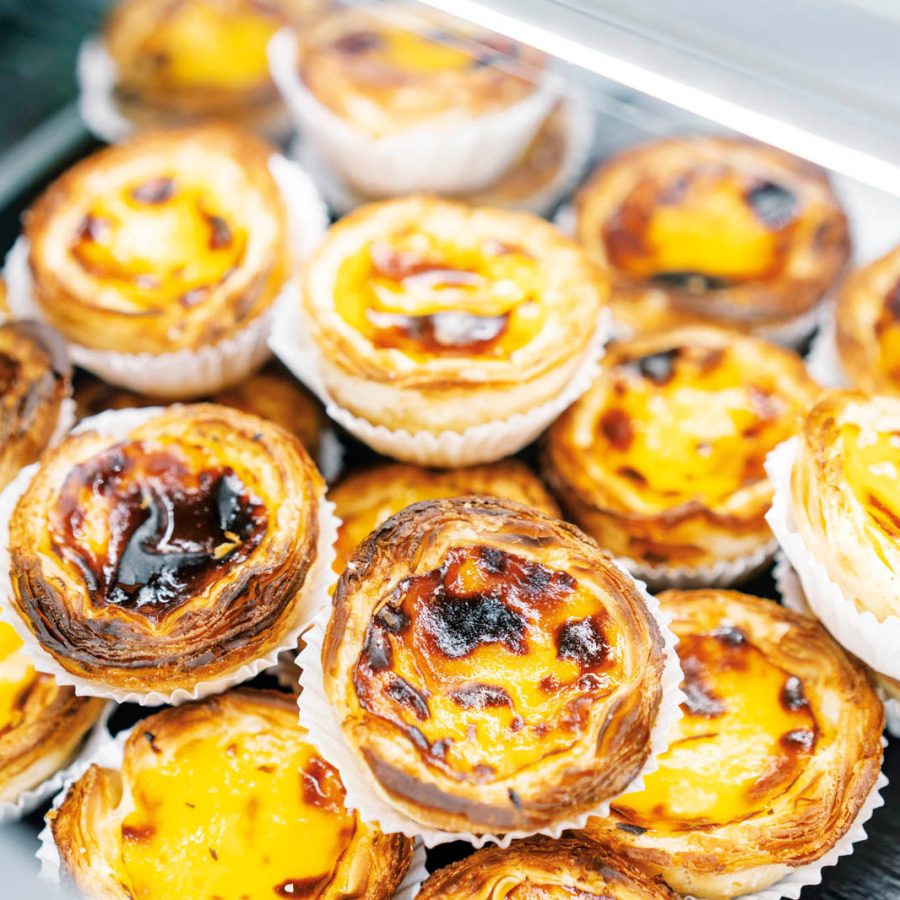
Credit: Malkovstock / Getty Images
Macao
City of gastronomy
In November 2017, Macao became the third Chinese region after Chengdu and Shunde to be designated a Creative City of Gastronomy by UNESCO. And it’s no wonder.
Many visitors head to Macao for its Portuguese food. Once ruled by Portugal, Macao is famed for its egg tarts and pork chop buns. Suckling pig, red bean stew with trotter, clams with white wine and duck rice are all found on menus in the city’s many Portuguese restaurants, such as the well-known La Famiglia and Flamingo.
But there’s also Macanese food, a distinct tradition often described as the world’s oldest fusion cuisine. Macanese fare can be traced back to more than 400 years ago, when ingredients and spices brought in by the Portuguese were juxtaposed with local produce to become a cuisine that’s uniquely Macanese. These include stir-fried curry crab and minchi, which is ground meat and potatoes flavoured with molasses and soy sauce, served over rice with a fried egg on top.
Macao is where you can get a serious Chinese food fix, too. For the best dim sum and contemporary Cantonese cuisine, the 8 Restaurant at Grand Lisboa Hotel stands out with its three Michelin stars, which it’s held onto for five straight years.
Getting to Macao
Option 1: A bus from Hong Kong via the Hong Kong-Zhuhai-Macao Bridge will take about an hour.
Option 2: Take an hour-long ferry from the Hong Kong Macau Ferry Terminal or China Ferry Terminal.
Option 3: Take a transfer coach or ferry from HKIA SkyPier when flying into Hong Kong. Our Direct Air+Sea and Direct Air+Land let customers book a combined flight and ferry or coach ride.*
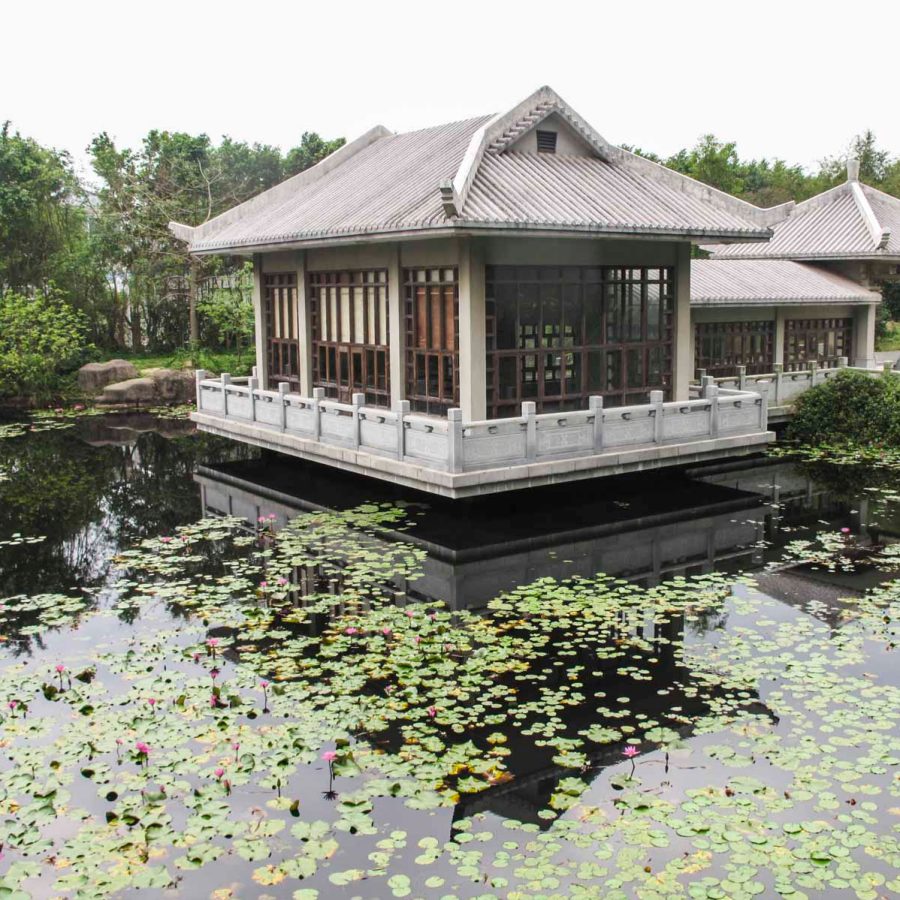
Credit: Li yuanqiu / Imaginechina
Zhongshan
The beauty queen
It’s a major transport hub in the Greater Bay Area, but there’s another side to Zhongshan – and it’s beautiful. The city is compared to one of China’s prettiest towns in an old saying: ‘The north has Suzhou, the south has Zhongshan.’ To experience a picturesque site, head to Zhan Garden in Beitai Village. Constructed in 1998, the garden is the largest privately owned classical garden in the Lingnan region. The owner built the verdant site with three themed zones as a retirement residence for his mother, and it’s open for all to enjoy. The owner sought out all kinds of old materials throughout China including tiles, bricks, doors and windows for use in its structures, and meticulously built the Huzhou Shan ecological reserve, where plants form a relaxing haven for visitors to unwind among pavilions and lakes.
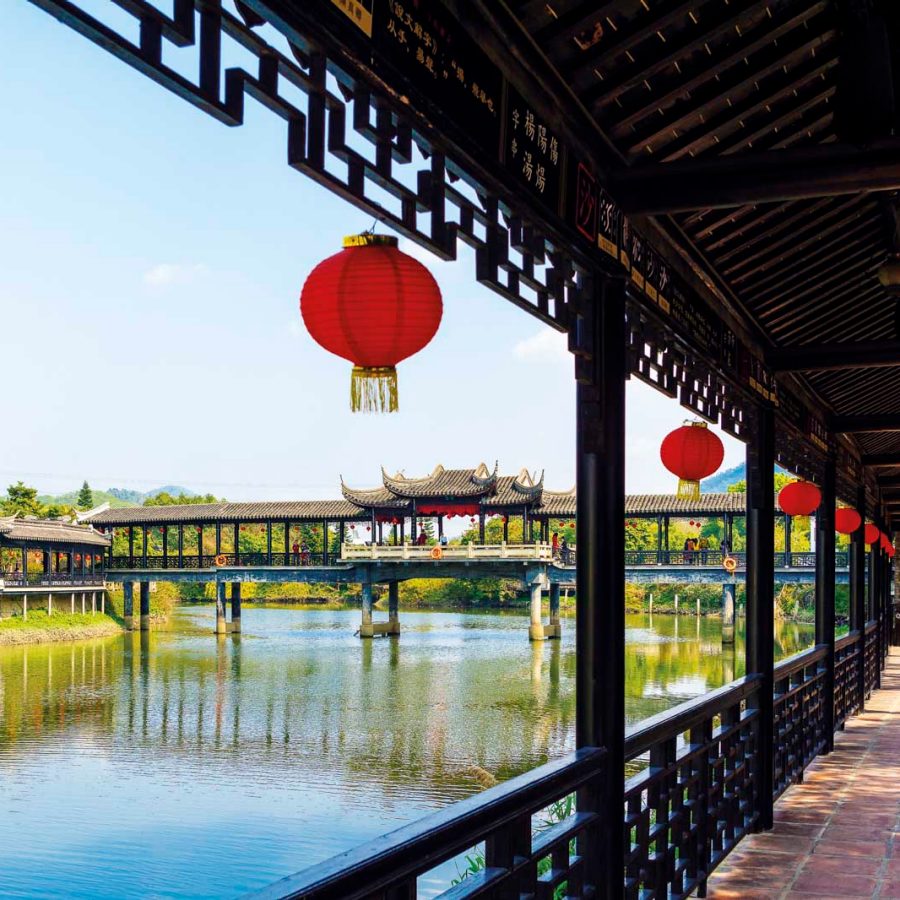
Credit: Philip Chan / VCG
Meanwhile, film buffs can head to Zhongshan Movie & Television Town, a place that is seen on big and small screens across China. It’s situated next to the former residence of Sun Yat-sen (who is called ‘Zhongshan’ in Chinese), and some of its film sets mimic the streets of old Guangzhou. The rest of the complex is divided into zones, each made to look like China, Japan, the UK and the US. The sets used for several successful Chinese TV dramas still stand and, coupled with an exhibition hall, show off the craft of set design. It’s an attraction that combines architecture, design and showbiz.
Getting to Zhongshan
Option 1: Take the ferry from Hong Kong. It takes 70-90 minutes from the China Ferry Terminal or the Hong Kong Macau Ferry Terminal.
Option 2: Take a high-speed ferry transfer from the HKIA SkyPier, available to passengers flying into Hong Kong. Cathay Pacific’s Direct Air+Sea lets customers book a combined flight and ferry ticket.* Simply type "Zhongshan Ferry Terminal (ZGN)” as your final destination.
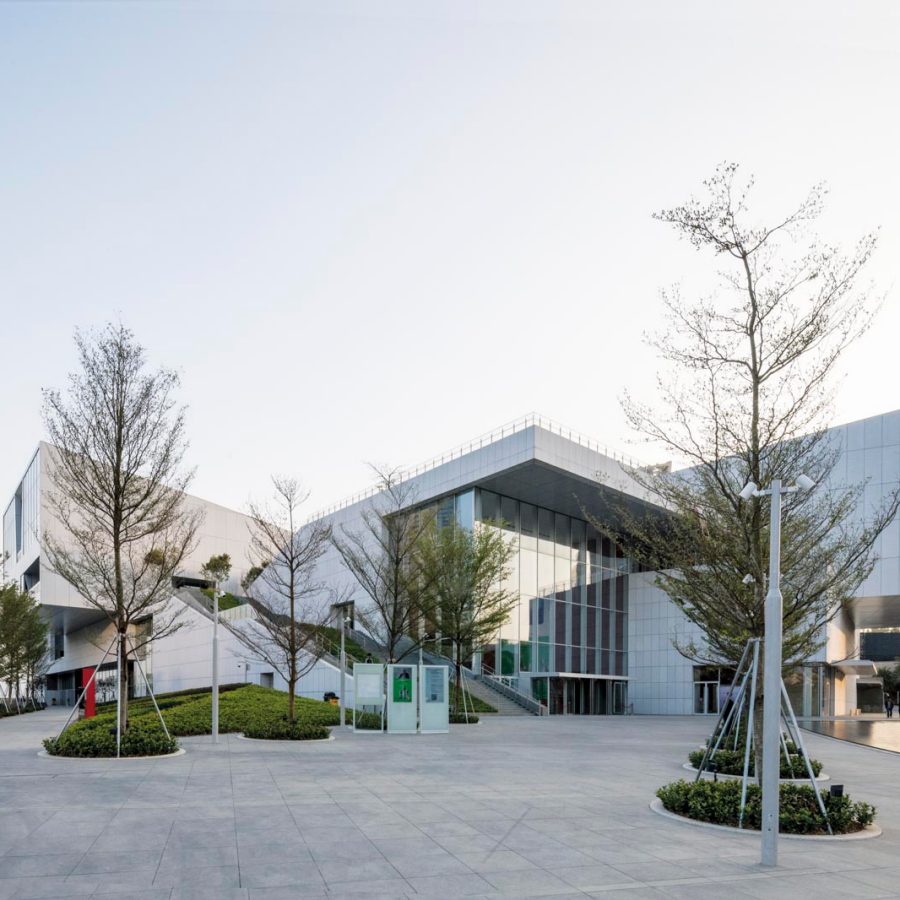
Credit: ©Design Society
Shenzhen
Contemporary art hub
China has been building museums in a frenzy, showcasing stunning architecture and often quality collections across the country – and the most impressive one of all is the Sea World Culture and Arts Center in Shenzhen’s Shekou area. Designed by Pritzker Prize-winning architect Fumihiko Maki, the 750,000-square-foot exhibition venue is currently the largest art museum in China. Inside, it’s futuristic with its stark white spaces and mirror-clad exhibits in the atrium and, apart from galleries, houses a theatre, restaurant and an observation deck. Equally futuristic is the Museum of Contemporary Art & Planning Exhibition (MOCAPE), an avant-garde gem in the Futian Cultural District that has ambitions to become one of the most influential art institutions in the country.
But the cool kids prefer OCT Loft. Converted from a factory with rusted balustrades, peeling paint, and other architectural features left untouched since the 1980s, this cultural park is at once nostalgic and modern. Contemporary art, design and experimental music sit alongside concept restaurants and bars, making this forward-thinking venue the place to be.
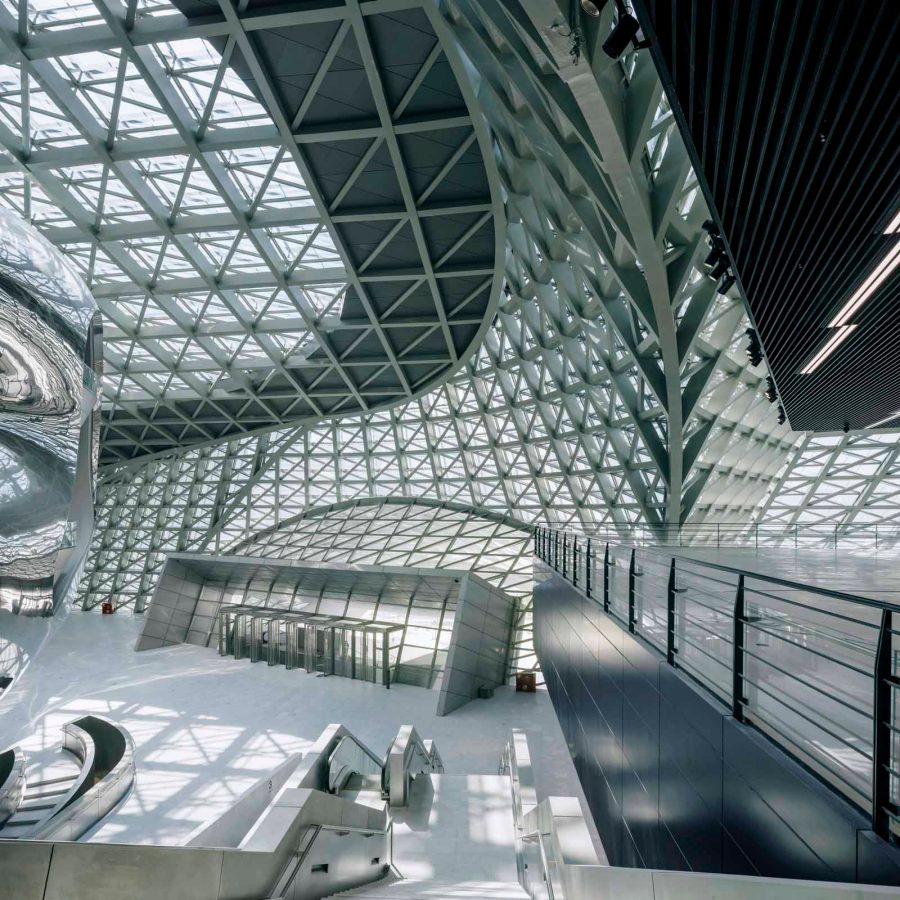
Credit: Duccio Malagamba
Getting to Shenzhen
Option 1: Take the Guangzhou-Shenzhen-Hong Kong Express Rail Link. The journey from Hong Kong to Shenzhen’s Futian area takes 14 minutes.
Option 2: Take a ferry to Shenzhen’s Shekou from Hong Kong Macau Ferry Terminal (one hour) or China Ferry Terminal (50 minutes).
Option 3: Take a high-speed ferry transfer from the HKIA SkyPier (30 minutes), available to passengers flying into Hong Kong. Book Cathay Pacific's Direct Air+Sea for a combined flight and ferry ticket.* Simply enter "Shenzhen, Shekou Cruise Home Port (ZYK)" or "Shenzhen, Airport Ferry Terminal (FYG)" as your final destination.
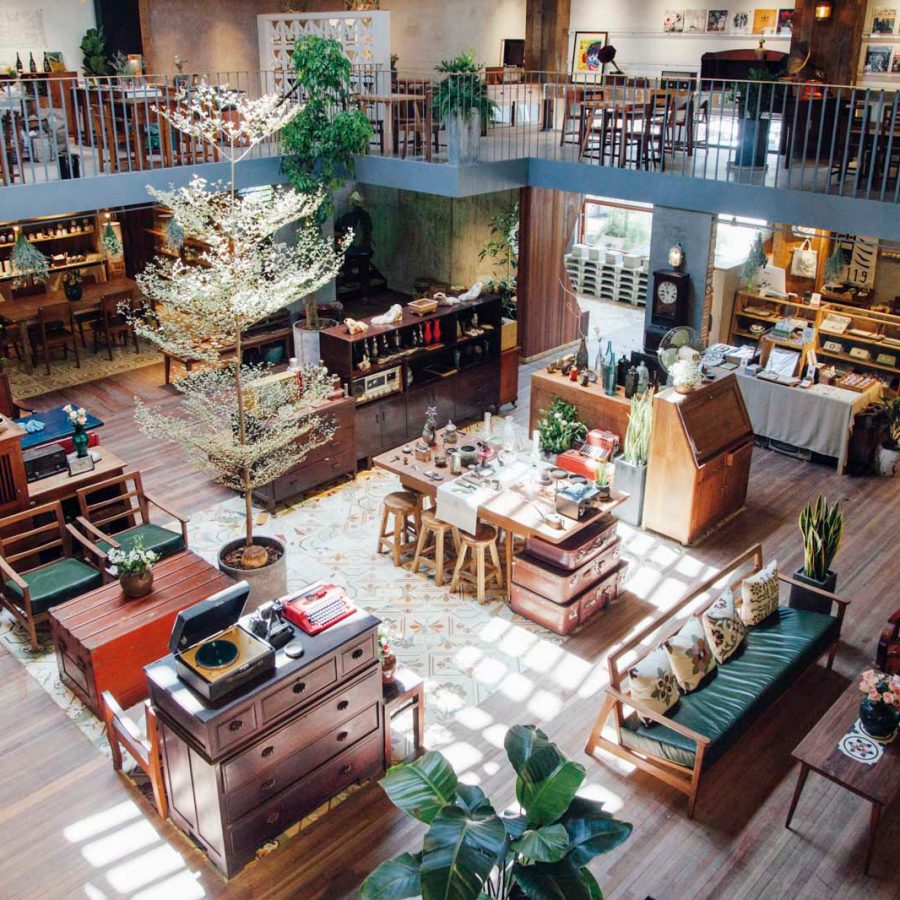
Zhuhai
Hipster enclave
Sure, there’s the shiny Huafa Mall in Zhuhai’s Nanping town to browse all your favourite international brands. But just a 10-minute walk will take you to Beishan Village, where the city slows right down. Standing amid glass-clad skyscrapers, the area’s arty vibe is a welcome escape.
The neighbourhood is home to Beishan Art District, which encompasses Beishan Art Center, a prime hipster hangout. The structure is a beautifully restored, century-old village temple, and within its walls you’ll now find little shops, restaurants and outdoor cafes. The venue frequently hosts events such as art exhibitions and music festivals, the biggest being Beishan Music Festival, a celebration of world music and jazz.

Nearby, the East Meets West Cultural and Creative Industrial Park is a space for music, design, fashion and art exhibitions and performances. Converted from an old residence, the complex includes a Republic-era theatre. The stage is still there, but the airy space has been given a new lease of life as a shop overseen by prominent Xiamen brand Goodone. The company is known for its vintage items and, like much of Beishan, transports visitors back to another era.
Getting to Zhuhai
Option 1: Take the Hong Kong-Zhuhai-Macau Bridge. A bus ride from Hong Kong to Zhuhai will take about an hour.
Option 2: Take a 70-minute ferry from the Hong Kong Macau Ferry Terminal or China Ferry Terminal.
Option 3: Take a coach transfer from HKIA SkyPier, available to passengers flying into Hong Kong. Book Cathay Pacific's Direct Air+Land for a combined flight and coach ticket through our website.*
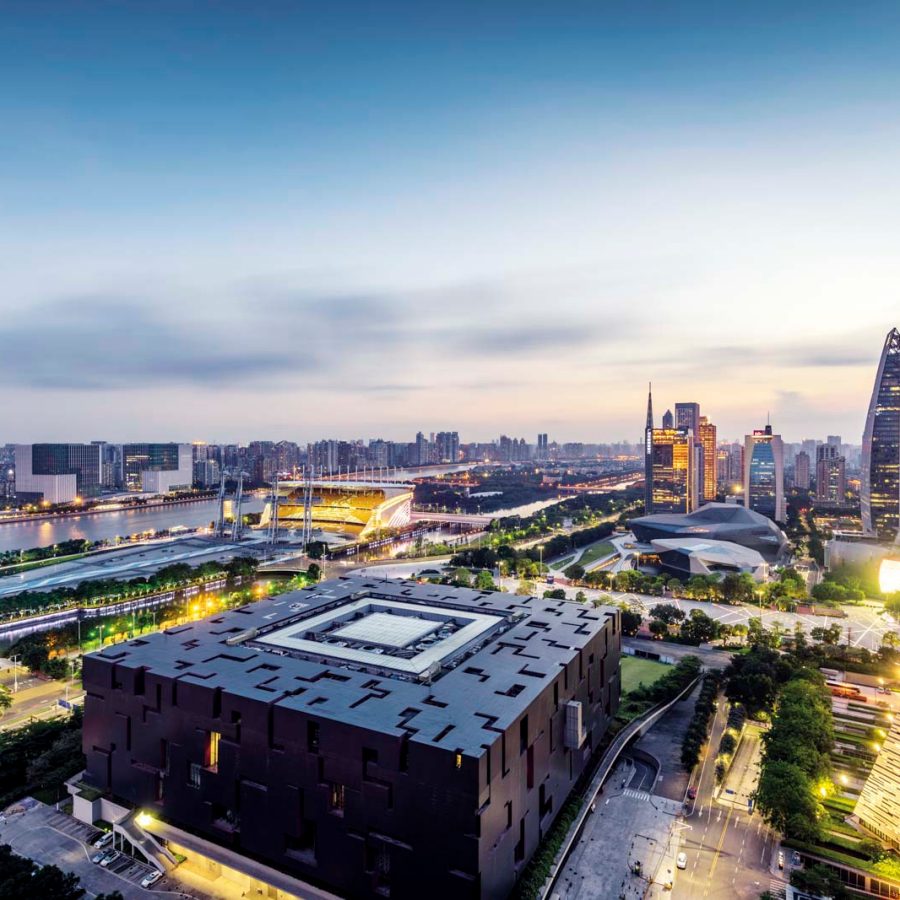
Credit: SammyVision / Getty Images
Guangzhou
International economic powerhouse
Guangzhou isn’t just known for its food any more. Since the early 1990s, the city has undergone some of the most rapid urban expansion in China, transforming into a glitzy metropolis. The Tianhe central business district has become the largest financial centre in southern China, with the government designating it the economic heart of the Greater Bay Area. At its centre, Zhujiang New Town embodies the grandeur of contemporary Guangzhou, filled with architectural marvels such as the Guangzhou Opera House by Zaha Hadid, the Guangdong Museum, the Guangzhou Library, Canton Tower, numerous bank towers and sports venues built for the 2010 Asian Games. For visitors, one of the most attractive developments is TaiKoo Hui, an upscale complex combining offices, shopping, culture and art.
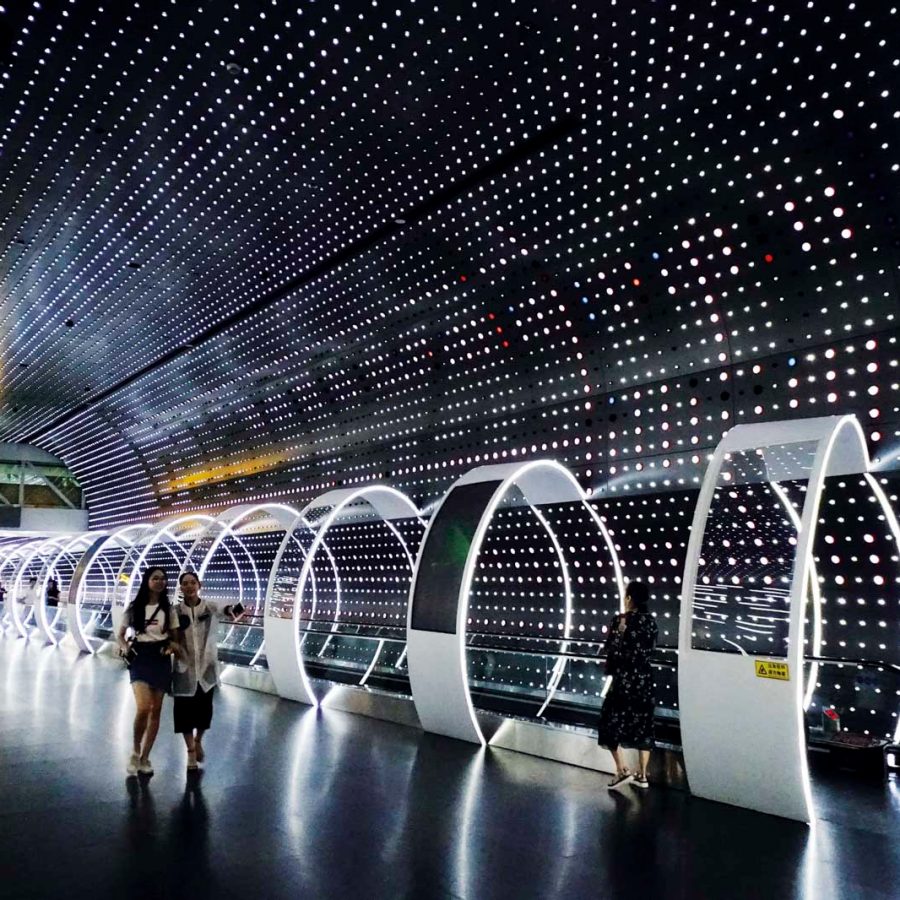
Credit: Chen wen / Imaginechina / AFP
Now, all eyes are on Huadu District. Hailed as ‘Guangzhou’s closest point to the world’, the area is featured prominently in the city’s development plans, with the expanded Baiyun International Airport and Guangzhou North Railway Station its transport hubs. The airport is the largest international aviation hub in southern China, while the railway station is a major transit point for railway and highway networks in the region. For entertainment, the Wanda corporation constructed a huge indoor skiing resort in Huadu in in 2019.
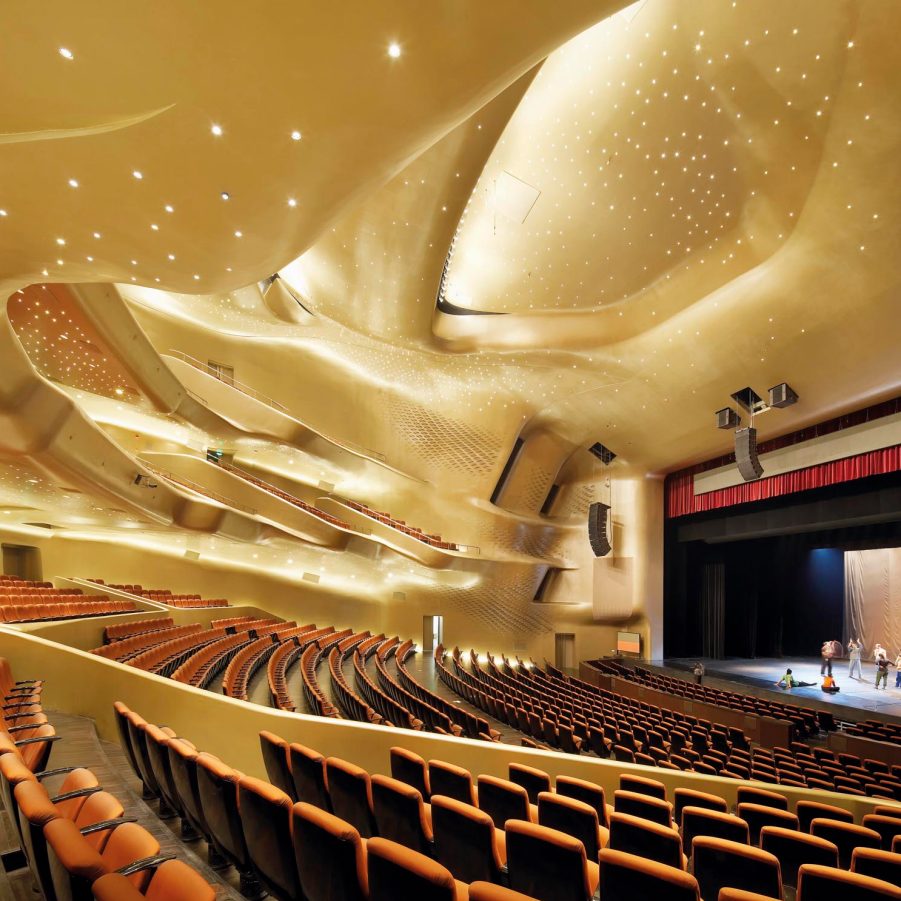
Credit: HUFTON + CROW / Getty Images
Getting to Guangzhou
Option 1: Take the Guangzhou-Shenzhen-Hong Kong Express Rail Link. The journey from Hong Kong to Guangzhou South takes 47 minutes.
Option 2: Take a high-speed ferry transfer from the HKIA SkyPier. Book Direct Air+Sea with Cathay Pacific, simply type in “Guangzhou, Pazhou Ferry Terminal (PFT)” or "Guangzhou, Nansha Passenger Port (NSZ)" as your final destination.*
*Available for selected routes on our website. For regions where this service is not available, please make your Direct Air+Sea or Direct Air+Land booking via a travel agent. If you're departing from Taiwan China, please purchase your ferry or coach tickets separately. We’ll arrange your bags to be checked through when you check in at your departing airport.
More inspiration
Guangzhou travel information
- China – the Chinese Mainland, Hong Kong SAR, Macao SAR and Taiwan Region
- Hong Kong SAR - English
- Chinese Mainland (China) - English
- Taiwan, China - English
- 香港特別行政區 - 繁體中文
- 中国內地 - 简体中文
- 中國台灣 - 繁體中文
- Africa
- South Africa - English
- Asia
- Bangladesh - English
- Korea - English
- Singapore - English
- Cambodia - English
- 한국 - 한국어
- Sri Lanka - English
- India - English
- Malaysia - English
- Thailand - English
- Indonesia - English
- Maldives - English
- ประเทศไทย - ภาษาไทย
- Indonesia - Bahasa Indonesia
- Myanmar - English
- Vietnam - English
- Japan - English
- Nepal - English
- Việt Nam - tiếng Việt
- 日本 - 日本語
- Philippines - English
- Australasia
- Australia - English
- New Zealand - English